
Economics of AI
6 May, 2024
The impact of AI adoption on productivity and economic growth is anything but simple - it is a profound, multifaceted phenomenon that is already reshaping the macroeconomic landscape. Recent breakthroughs in generative AI and Large Language Models have unleashed seismic shifts, profoundly impacting productivity, wages, and income inequality.
Yet, as we grapple with AI's far-reaching implications, it's critical to approach the topic with a healthy dose of skepticism. The tech industry has a notorious track record of building up grand visions of disruption, only to invariably cycle through waves of hope and disappointment. Cutting through the hype is essential to truly understand AI's nuanced, long-term economic ramifications.
The remarkable technical progress witnessed in the past year, with ChatGPT reaching 100 million monthly users in just two months, suggests that truly transformative implications, including the possibility of artificial general intelligence (AGI), may be on the horizon.
It's crucial to recognize that the progress in AI is often exponential rather than linear. Moreover, the future of AI is not predetermined; it can develop in vastly different directions, depending on various factors. In this article, we focus on key areas of macro and microeconomic interest, discussing productivity and economic growth, the role of companies in AI development and market structure formation, and the future of income distribution.
Macro Scale - Economic Growth
The future of economic growth is intrinsically linked to the trajectory of productivity growth. Most advanced economies are currently grappling with the challenge of sluggish productivity growth, which is a crucial determinant of national wealth and living standards. Boosting productivity growth may be the single most fundamental economic challenge facing the global economy.
Even with the rapid advancements in AI capabilities, its adoption by businesses may remain slow and concentrated among large firms. The economic benefits of AI could be limited to narrow, labor-saving applications, rather than enabling workers to perform novel or powerful tasks. Displaced workers might end up in less productive and dynamic jobs, further dampening the aggregate benefits to long-term productivity growth. Moreover, firms may fail to implement the necessary organizational and managerial changes to fully leverage the potential of AI.
Positive Productivity Growth Scenario
The future of AI holds the promise of a transformative boost to productivity growth. Estimates suggest that generative AI could increase productivity by 10-20% over the next decade, compared to the past 20 years. This scenario paints a picture of AI living up to its potential as the most radical technological breakthrough in decades.
In this future, AI complements rather than replaces workers, freeing them to focus on more creative, inventive, and non-routine tasks. AI can capture and embody the tacit knowledge of individuals and organizations, drawing on vast amounts of digitized data. This can lead to a growing share of the labor force resembling a society of research scientists and innovators, driving a permanently higher rate of economic growth.
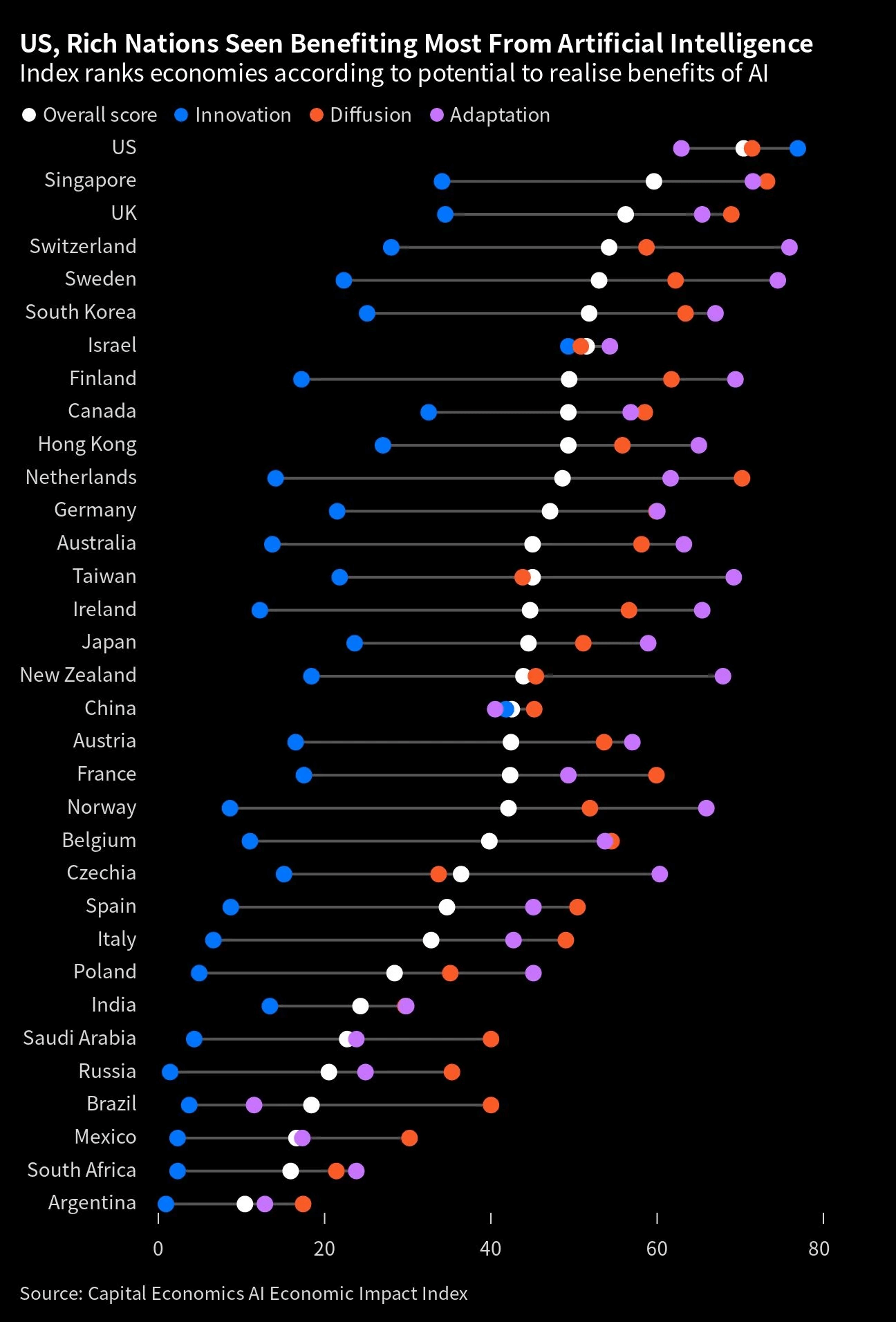 The Productivity Gains from AI
The Productivity Gains from AIThe productivity gains from AI can come through various channels:
- Automation: AI models can take over and reduce costs in tasks such as mid-level clerical functions, text summarization, data classification, pattern recognition, and computer vision.
- Task Complementarity: AI can increase the productivity of tasks that are not fully automated by providing better information or access to complementary inputs.
- Deepening of Automation: AI can improve the productivity of capital in tasks that have already been automated.
- New Task Creation: AI can enable the development of entirely new tasks that enhance the productivity of the overall production process.
We can already see examples of this in action, such as automated stock ordering in supermarkets and the emergence of self-driving cars, which can maintain a higher standard of safety than the average human driver.
In this future, the successful integration of AI with robotics means that a larger portion of the economy becomes amenable to AI-driven progress. AI can enable not just doing existing things better but also envisioning and creating things previously unimaginable, from advancements in medicine to a recursive self-improvement process in areas like mathematics, science, and further AI development.
Micro Level Contribution to Revenue Increase and Cost Reduction
When analyzing artificial intelligence from an economic perspective, the key question is: What costs does AI help reduce? This simple but illuminating question reveals why AI is so transformative compared to many other emerging technologies.

AI can be understood as a technology that reduces the cost of a fundamental input into various business and life activities, namely handling and processing large data and generating predictions. To understand the profound impact of such a cost reduction, we can look at the example of another technology - semiconductors.
The Impact of Semiconductors
- Increased Usage: Semiconductors reduced the cost of arithmetic, leading to more applications leveraging this input, from government and military use in the 1960s to demand forecasting in businesses.
- Problem Reframing: Cheaper arithmetic enabled solving problems that were previously framed in non-arithmetic ways, such as transitioning from film-based to digital photography.
- Complement and Substitute Shifts: The falling cost of arithmetic increased the value of its complements, like software and hardware for digital cameras, while reducing the value of its substitutes, such as film-based camera components.
AI Potential in Cost Cuts
Just as semiconductors revolutionized arithmetic, AI has the power to dramatically reduce the cost though increased speed of predictions generation and data analysis. This cost reduction can lead to similar transformative effects, enabling new applications, reframing of problems, and shifts in the value of complements and substitutes.
By understanding AI through this lens of reducing the cost of a critical input, we can better anticipate and harness its profound economic implications, both at the micro and macro levels.
As the cost of prediction continues to drop, we'll see more of it applied to traditional problems like inventory management, as we can now predict faster, cheaper, and better. In fact, 32% of European businesses have already adopted AI, a trend that could contribute an additional €600 billion in gross value added (GVA) to the European economy by 2030 if maintained.
However, the true power of AI lies in its ability to solve problems that we haven't historically thought of as prediction problems.
Precision Forecasting for Supply Chain Management
Advanced analytics and machine learning models are at the forefront of this transformation, enabling companies to anticipate market trends and consumer behavior with unprecedented precision. Predictive analytics harnesses historical data, statistical algorithms, and machine learning to forecast future outcomes. In supply chain management, this means accurately predicting demand to ensure the right products are available at the right time, reducing the risk of stockouts or overstock.
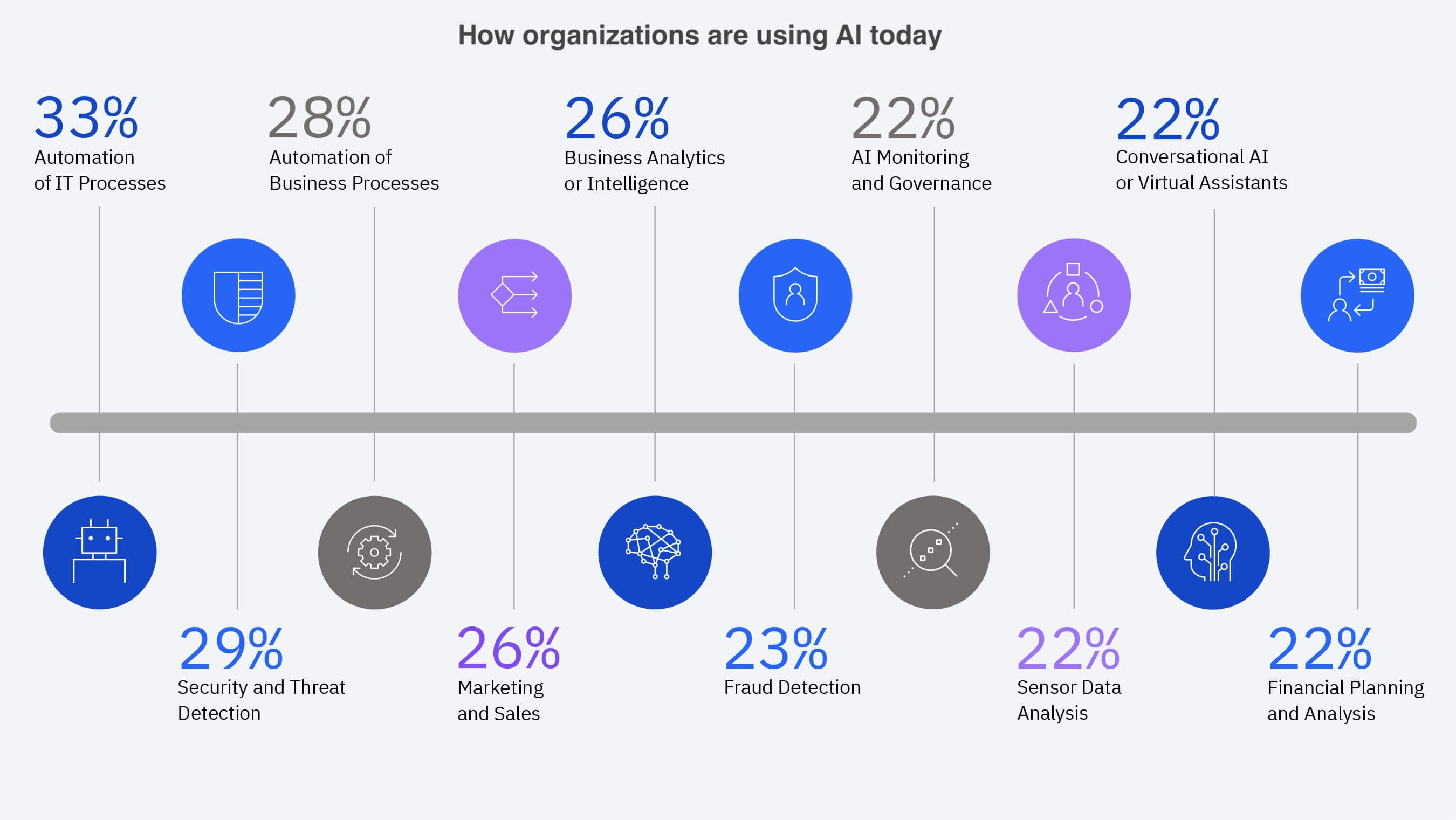
Machine learning algorithms can process vast amounts of data and identify complex patterns that would be impossible for humans to discern. AI systems can continuously learn and improve, adjusting their predictions based on real-time data inputs. This dynamic approach to demand forecasting allows for more agile and responsive supply chain strategies, helping businesses maintain leaner inventories and reduce storage costs while minimizing waste.
The Cloud as the Foundation for AI Adoption
Cloud technology forms the foundation for the adoption of digital and AI technology. Over half (53%) of European businesses say that cloud computing has become more important to their business since 2022, while 80% say it is currently essential or important. If this appetite can be maintained, the EU could meet its target of 75% of businesses using cloud technology by 2030, a critical milestone in empowering all businesses to capitalize on the productivity and profitability benefits current AI users enjoy. Cloud providers, such as AWS and GCP, investing billions through cloud and edge infrastructure, job creation, and product development.
Monopolistic Trends in the AI Economy
In AI-driven markets, dominant platforms like Amazon and Google are exerting significant influence over pricing and competition. Industrial concentration, measured by the collective market share of the largest firms in a sector, has risen dramatically in the United States and many other advanced economies. These large "superstar" firms are often much more capital-intensive and technologically sophisticated than their smaller counterparts.
Concentration in Generative AI
The market for advanced generative AI models may become highly concentrated due to the immense computational resources and vast data required for training. The costs associated with training these models create significant barriers to entry for smaller players. For instance, Google's DeepMind reportedly spent a staggering $650 million to train its Gemini model, and the cost of training cutting-edge AI models is doubling every six months, making it unaffordable for most technology companies.
AI models become ever more expensive to develop and operate. The GPT-4 model cost more than $100 million to train during its initial development and requires about $700,000 a day to run. The typical cost of developing a large AI model may soon be in the billions of dollars.

Advantages of Big Tech Platforms
Late entrants face challenges as many websites block AI companies from using their content for training purposes. Big Tech platforms like Google, Microsoft, and Meta already control proprietary datasets, giving them a significant competitive advantage. It may be that only the largest firms and their business partners develop proprietary AI, as firms such as Alphabet, Microsoft, and OpenAI have already done, while smaller firms struggle to keep up.
Boosting Small Businesses with Open-Source AI
While the rise of monopolistic tech giants in the AI space is concerning, there is a bright side. Large companies are increasingly contributing their research efforts to open-source AI models, such as Meta's LLaMA and Berkeley's Koala. This vibrant open-source AI ecosystem, supported by a combination of for-profit companies, nonprofits, academics, and individual coders, enables broad access to cutting-edge AI technologies that were previously out of reach for small businesses.
The Advantages of Open-Source AI
According to researchers, open-source AI models are faster, more customizable, more private, and pound-for-pound more capable than proprietary models. The processes in small open-source models can be quickly repeated by many people, often resulting in better performance than large private models that are slowly iterated by a single team. Crucially, open-source models can also be trained more cheaply, potentially allowing them to dominate the expensive proprietary models in the long run.
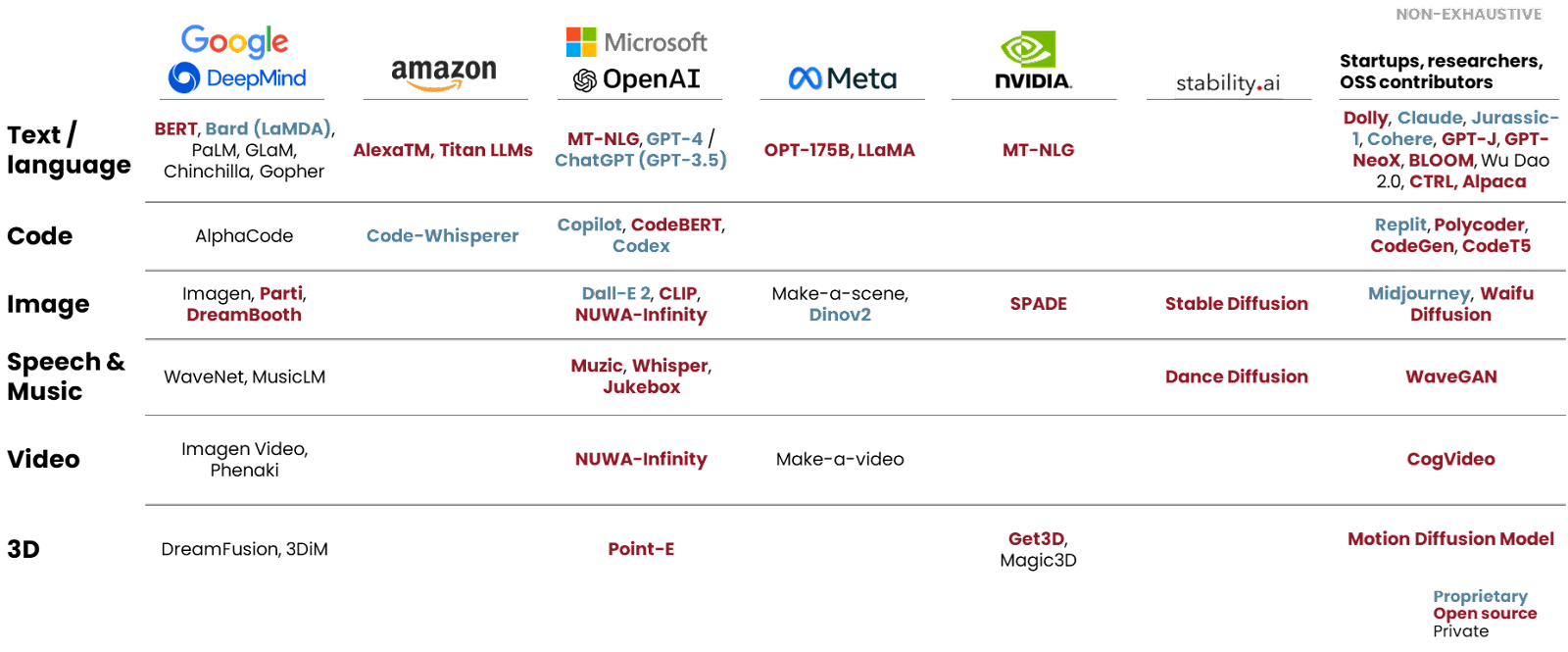
Organizational Adaptation is Key
To effectively leverage AI, firms must adapt their organizational structures, rethinking workflows, roles, and responsibilities. By embracing the democratizing power of open-source AI, small and medium-sized businesses can level the playing field and compete with industry giants, driving innovation and economic growth.
Putting People First by Addressing Income Distribution in the AI Era
A large body of research suggests that computers and information technology have contributed to growing income inequality by automating routine middle-income jobs, polarizing the labor force into high-income and low-income workers.
Short-Term Disruption and Job Displacement
In the short term, technologists and managers designing and implementing AI can directly substitute human labor, driving down wages for many workers. This threat is especially acute for creative industry workers, as generative AI starts to produce words, images, and sounds - tasks previously thought of as non-routine and even creative. The number of jobs under threat from AI competition is likely to grow much larger, with entire industries upended and replaced.
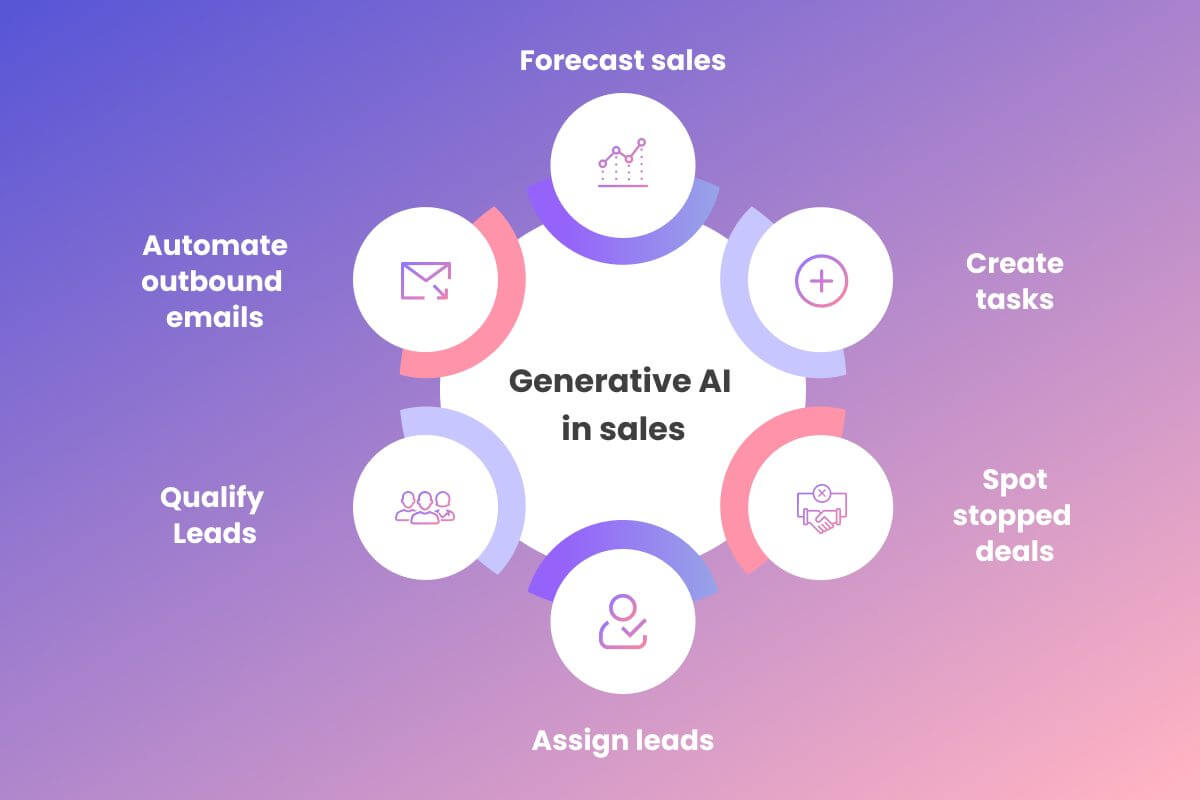
The Emerging Two-Tier Labor Market
This is not a future of mass unemployment, but as AI substitutes for high- and decently-paying jobs, more workers are relegated to low-paying service jobs, such as hospital orderlies, nannies, and doormen - where human presence is intrinsically valued. These are the areas where businesses cannot justify automating, as human labour remain cheaper than technological investments. The final bastion of purely human labor may be these types of jobs with a physical dimension. In this scenario, income inequality increases as the labor market is further polarized into a small, high-skilled elite and a large underclass of poorly paid service workers.
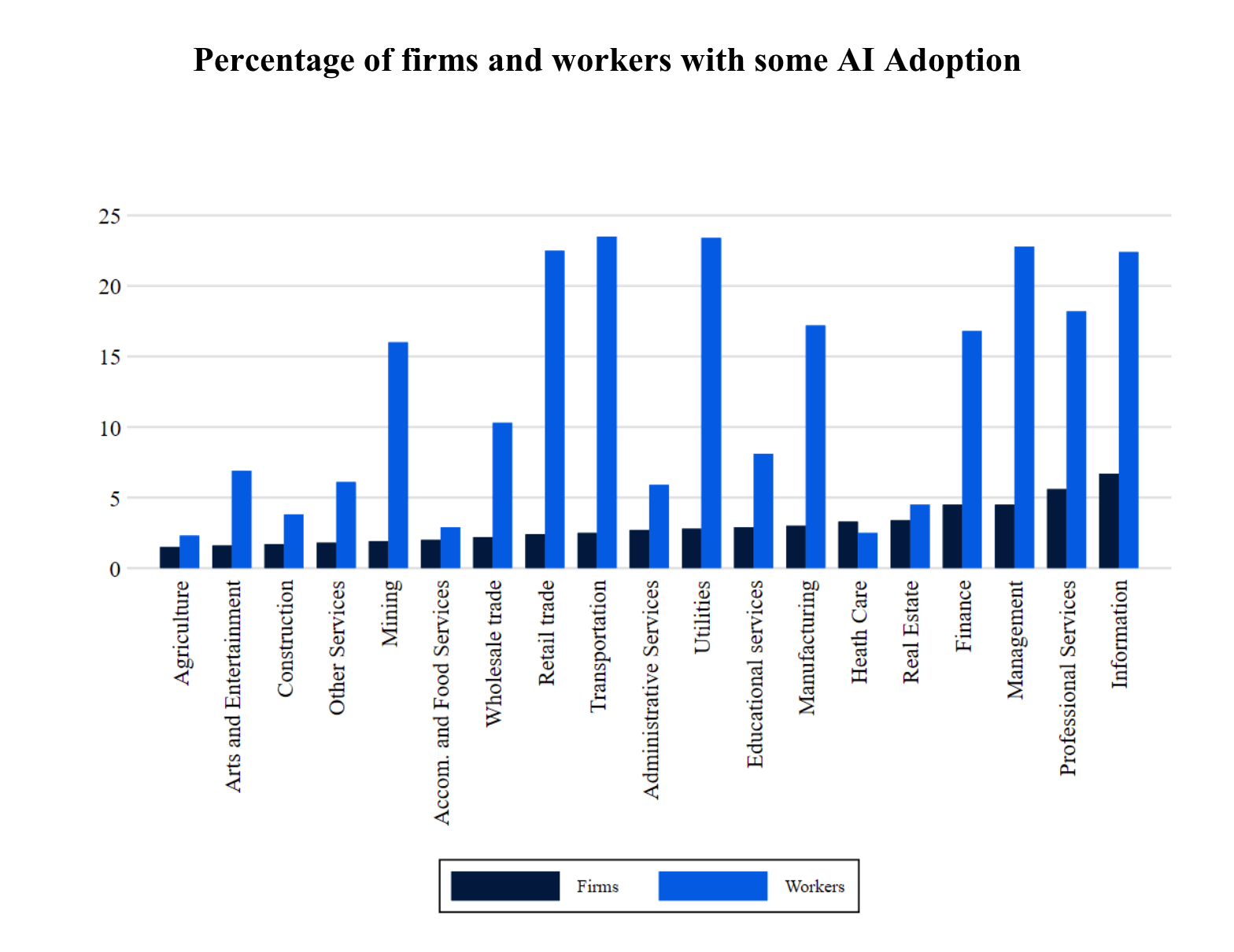
Changing Tasks, Not Eliminating Jobs
Contrary to popular fears, new technologies like AI don't necessarily lead to a net loss of jobs. Instead, they often change the nature of existing roles rather than eliminating them altogether. History has shown that technologies usually create more jobs than they destroy.
Empowering the Workforce
AI can actually help reduce income inequality by assisting the least experienced or knowledgeable workers to perform better. For instance, software coders now benefit from the guidance of AI models like Copilot, which draw on best practices from many other workers. This effectively levels the playing field, allowing less skilled coders to match the productivity of their more experienced counterparts.
Boosting Productivity Across Industries
The impact of AI is particularly evident in industries like call centers, where studies have found a 14% average increase in worker productivity when using AI assistants. These tools provide real-time guidance to customer support staff, benefiting new and low-skilled workers the most.
Addressing the Digital Skills Gap
However, 61% of European businesses say a digital skills gap impacts their performance, while 26% said this has prevented them from adopting AI. Overcoming this challenge will be crucial for businesses to fully capitalize on the productivity and equity-enhancing potential of AI.

In addition to tangible productivity gains, AI may also complement genuinely creative and interesting tasks, improving the basic psychological experience of work and the quality of output. The call center study found not only productivity improvements, but also reduced worker turnover and increased customer satisfaction for those using the AI assistant.
Conclusion
Artificial intelligence holds immense potential to drive significant gains in productivity and economic growth. However, the extent and pace of these gains will ultimately depend on how people and societies adapt to this transformative technology.
Factors Impacting AI's Economic Impact
Forecasting the macroeconomic effects of AI is a complex endeavor, requiring careful consideration of various speculative assumptions. The realized gains will depend on the widespread adoption of AI, the development of skilled users, and the ability of companies to effectively translate the technology into higher productivity.
Productivity gains are key to long-term economic growth, as they enable the same number of workers to produce more goods and services, ultimately raising living standards. The theoretical potential of AI is substantial, but the actual outcomes may be smaller or slower to materialize, depending on the aforementioned factors.
Society needs innovations in economic and policy understanding that match the scale and scope of the breakthroughs in AI itself. By reorienting research priorities and developing a smart policy agenda, we can work towards a future of sustained and inclusive economic growth, harnessing the transformative power of artificial intelligence.